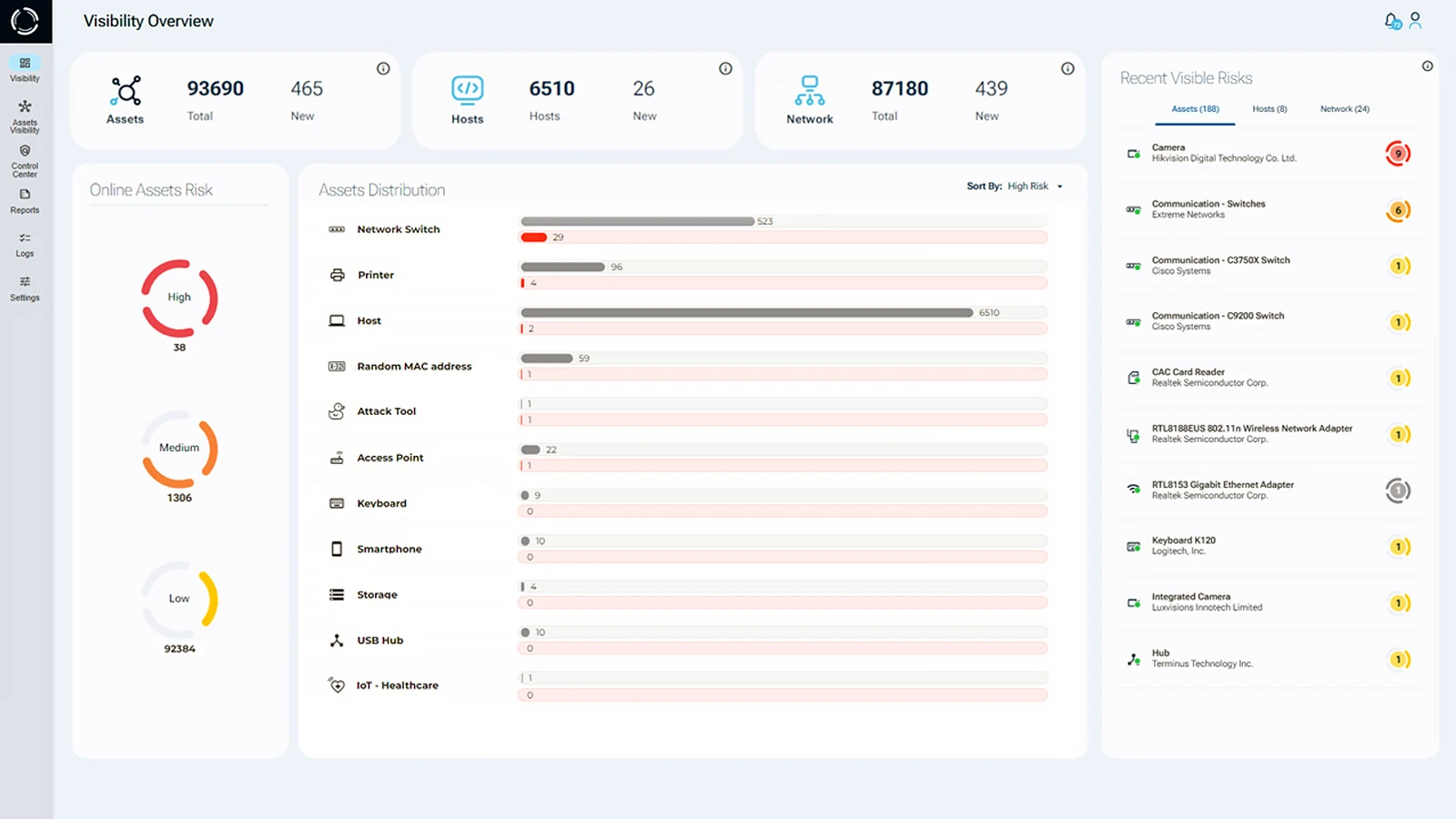What is IoMT?
The Internet of Medical Things (IoMT) refers to the network of medical devices and systems connected to the Internet, enabling them to collect, transmit, and share health data, including personal health information (PHI). IoMT offers significant benefits by enhancing healthcare efficiency, enabling remote monitoring, and improving patient outcomes. However, these connected devices also introduce serious IoMT cybersecurity challenges. Ensuring IoMT security is critical to protecting sensitive patient data, preserving device functionality, and maintaining trust in healthcare systems.
Why IoMT Security it’s Critical in Modern Healthcare?
IoMT security is no longer optional in hospitals worldwide; it has become a fundamental requirement. With the growing number of connected devices in healthcare environments, organizations must ensure full visibility into their IoMT networks. IoMT security helps ensure that healthcare organizations can monitor devices, detect anomalies, and identify potential threats before they escalate.
IoMT and Network Security
The absence of adequate visibility into the devices connected to a network is a major obstacle to effective IoMT security. When hospitals lack visibility into their connected IoMT devices, their entire network is vulnerable to security breaches. This is a significant concern, as many IoMT devices operate on platforms that are more susceptible to attacks, including peripheral rogue devices that current security solutions may fail to detect.
Addressing these challenges requires specialized strategies tailored to IoMT security, including instant monitoring, threat detection, and proactive risk management. Hospitals must have the tools to protect these devices from cyber-attacks, which can stem from a variety of sources, such as supply chain vulnerabilities, insider threats, and device impersonation.
The IoMT device global hospital market is growing at an astronomical rate each year. This astronomical growth rate shows how much the medical industry has adapted these types of devices. That being said, this has led to increased healthcare cybersecurity challenges as there are now many more devices to manage. On top of this, there is also the issue of device vendor sprawl. The lack of physical layer visibility means ensuring a device’s integrity is nearly impossible.
IoMT Security
There are three things that every hospital should have when it comes to cyber security that are exclusive to Sepio and not found in other current security platforms. Assets visibility, Assets Risk Management and Rogue Device Mitigation (RDM) – all crucial components of robust IoMT security. However, the keystone that makes this system effective in “holding up the stone archway”, in providing the proper defense, is network assets visibility. Specifically physical layer visibility, which is paramount for ensuring strong IoMT cybersecurity.
Having comprehensive asset inventory is not just advantageous but mandatory for effective IoMT security management. Through hardware access control, enterprises can implement a zero trust architecture (ZTA) approach that implements microsegmentation protocols based on a device’s identity. Furthermore, physical layer visibility allows for the instant detection and identification of rogue devices, which can then get blocked immediately. Ultimately, physical layer visibility offers complete asset visibility, which works in tandem with other security software and protocols in order to provide comprehensive cybersecurity in hospitals.
Moreover, physical layer visibility offers immediate detection and identification of rogue devices, including those that attempt to bypass traditional security measures. When a rogue device is detected, it can be instantly blocked, ensuring that no unauthorized or compromised device is able to communicate within the network. This seamless integration of visibility, access control, and rogue device mitigation strengthens IoMT security, providing hospitals with the peace of mind that their medical devices and sensitive data are protected.
Network Assets Visibility
Hospitals must maintain clear, real-time visibility of all connected IoMT devices to detect unusual activity and prevent security risks that threaten patient safety and data integrity. Continuous monitoring provides instant insights, enabling quick detection and response to potential cyber threats across the IoMT network.

Sepio’s IoMT Security Solution
Sepio provides the best physical layer protection and visibility to instantly detect unknown devices, ensuring that no hardware goes unnoticed or unmanaged. This physical layer visibility is crucial for IoMT security, as it enables the identification of rogue devices that might otherwise evade traditional security measures. Sepio’s solution makes sure that hardware-based attacks targeting IT, OT, and IoMT devices are detected and stopped in real time.
Furthermore, Sepio strictly enforces policies and mitigates rogue devices, instantly blocking unauthorized or malicious hardware from accessing the network. With its Zero Trust Hardware Access (ZTHA) approach, Sepio implements a strict security policy that allows only trusted devices to access the network, preventing potential IoMT security breaches.

In the ever-evolving world of IoMT security, Sepio’s Asset Risk Management (ARM) solution provides hospitals with the tools needed to maintain control over their networked devices. With real-time visibility and comprehensive protection, hospitals can safeguard their infrastructure from a wide range of cyber threats and ensure the integrity of their IoMT devices.
Mitigate IoMT Security Risks with Sepio’s Patented Technology
Gain complete visibility into every known and shadow asset across your network, ensuring you do not overlook any vulnerabilities. Prioritize and mitigate potential risks, especially those related to IoMT network security, with advanced, real-time monitoring and threat detection.
Speak with our experts today to learn how Sepio’s patented technology can help you take control of your asset risks. Our solution provides you with deep insights, allowing you to secure not only your operational technology but also critical IoMT devices, preventing costly breaches and ensuring compliance.






